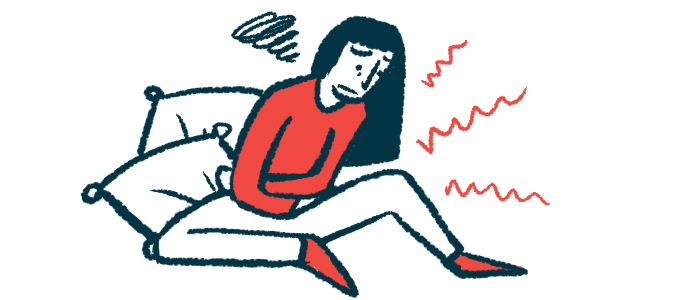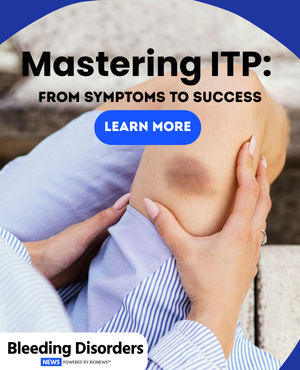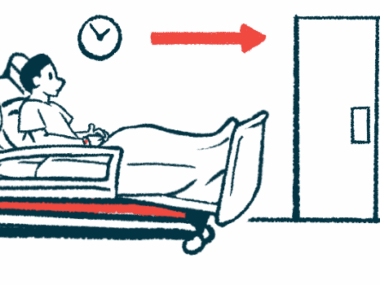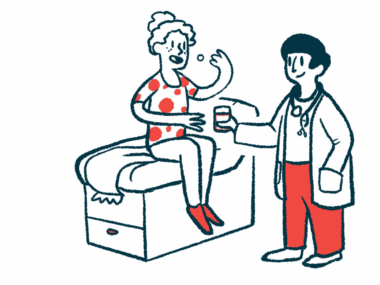Heavy menstrual bleeding affects over 90% of women with VWD
Study finds greatest burden during adolescence, calls treatment 'critical'
Written by |

Heavy menstrual bleeding (HMB) affects 93% of women with von Willebrand disease (VWD) at some point in life, according to a Swedish study that concluded that such bleeding is “a common and burdensome symptom” for many patients that “negatively impacted their lives.”
The new study, which collected data from patient questionnaires and medical records, found that the greatest burden from heavy menstrual periods came during adolescence, with many young patients experiencing iron deficiency or iron-deficiency anemia, which can result in extreme tiredness, chest pain, and shortness of breath.
Iron deficiency, missed school or work, and reduced participation in social and physical activities were commonly reported among affected women, the researchers noted.
These findings “underscore the need for a more individualised care model for women with VWD, especially during adolescence, to mitigate the impact of HMB,” the researchers wrote, adding that “earlier diagnosis and adequate treatment are critical to reducing the impact of HMB among women with VWD.”
The study, “Prevalence and Impact of Heavy Menstrual Bleeding in Women With von Willebrand Disease Across Age Groups: A Retrospective Study,” was published in the journal Haemophilia.
VWD is a bleeding disorder caused by a deficiency in a clotting protein called von Willebrand factor (VWF), which leads to symptoms like heavy and prolonged bleeding. Clinicians categorize VWD into three main types based on the impact on VWF levels and activity.
In type 1, VWF levels are low but remain detectable. Type 2 is characterized by the production of an abnormal form of VWF that does not function properly. In type 3 — generally the most severe form — VWF levels are very low or not detectable.
HMB is thought to affect as many as 9 of every 10 women with VWD, and may lead to iron deficiency and iron deficiency anemia — when the body can’t make enough hemoglobin, the protein that carries oxygen in red blood cells. This can impair both physical and cognitive functioning and significantly reduce quality of life.
Treatments are available, but ‘understanding of their effectiveness’ is needed
Menstrual periods marked by heavy bleeding can begin in adolescence, persist through adulthood, and worsen during perimenopause — the transitional period leading up to menopause, when menstrual periods eventually cease — due to hormonal changes.
Although patients have treatments available, “a better understanding of their effectiveness in managing HMB is still needed,” the researchers wrote.
To better understand the impact of HMB, a research team from institutions in Sweden conducted a retrospective analysis of clinical data from women followed at three hemophilia care centers in the country.
Of 208 women, aged 18-55, identified via the Swedish national registry for bleeding disorders, 136 accepted an invitation to take part in this study. The participants had a median age of 36. Among them, more than half had type 2 VWD. A total of 35% had type 1 VWD, while 7% had type 3 VWD.
The majority (76%) had previously used hormonal therapy due to HMB, with about two-thirds finding the treatment effective. Hemostatic agents — medications to stop bleeds — were used either alone or in combination with hormonal therapy, with most women deeming them effective.
A total of 81 women (60%) sought medical care due to HMB. Slightly more than half of the women had been diagnosed with iron deficiency or iron-deficiency anemia, with 51% prescribed iron treatments. Additionally, 65% of the women used analgesics, or painkillers, for menstrual pain relief.
More than half of the women took sick leave due to heavy menstrual bleeding, and 86% reported that HMB negatively impacted their life overall, according to the researchers.
4 in 10 adolescents with HMB had iron deficiency or iron-deficiency anemia
The prevalence of HMB varied across different age groups, but overall, the trend was for a decrease in the prevalence of heavy periods with increasing age. Among all the women, 85% had HMB during adolescence, with 63% experiencing heavy periods during their 20s. HMB affected 45% of the women in their 30s, and 36% in the 40-55 age range.
No significant differences were noted in how common HMB was between those diagnosed with VWD before age 13 or after age 20. However, a significant association was found between diagnosis before age 20 and a higher prevalence of iron deficiency or iron-deficiency anemia during adolescence.
HMB was reported in all type 3 patients during adolescence, and in the vast majority of those with type 2 or type 1 VWD.
During that period, about half of the patients sought medical care. A total of 40% reported iron deficiency or iron-deficiency anemia, and 34% received iron treatment.
The impact of HMB was substantial, with 75% of patients reporting that it affected school or work. Moreover, the impact was widespread: A total of 62% of the women reported that HMB affected social activities, while 65% said it had an effect on physical activity. One-third of the women reported intimacy issues.
Nearly two-thirds (63%) experienced HMB during young adulthood — ages 20-29 — with no major differences between disease types. A total of 32% experienced iron deficiency or iron-deficiency anemia, and 30% received iron treatment. Additionally, 42% sought medical care, and HMB continued to affect daily life, impacting school or work for 45%, and social or physical activities for 41%. Intimacy disruptions were also reported by 41% of young adults.
Among women ages 30-39, 45% experienced HMB, with prevalence rates of 44% for type 1, 43% for type 2, and 67% for type 3.
About 4 of every 10 women sought medical care, with 23% reporting iron deficiency or iron-deficiency anemia, and 24% receiving iron treatment. HMB’s impact persisted, with 27% citing effects on school or work, 23% on social activities, 26% on physical activity, and 29% on intimacy.
Impact of heavy menstrual bleeding seen to lessen with age
As the women aged, the impact of HMB began to lessen somewhat, the data showed. In the midlife group, with the women ranging in age from 40 to 55, slightly more than one-third — 36% or 20 women — experienced HMB. The prevalence rates were 36% for type 1, 47% for type 2, and 25% for type 3.
Among these women, 65% sought medical care, 23% reported iron deficiency or iron-deficiency anemia, and a quarter received iron treatment. HMB continued to affect daily life, impacting school or work performance in 25%, as well as social activities, physical activity, and intimacy in similar percentages.
The findings emphasise the need for increased awareness during adolescence, more structured follow-up and improved individualised management strategies to prevent and treat HMB.
Overall, according to the researchers, these findings show that “HMB is highly prevalent among women with [all types of VWD], affecting 93% of participants at some point in life, with the highest prevalence during adolescence.”
The team noted that, despite many women receiving treatment, iron deficiency or iron-deficiency anemia “remained common, suggesting suboptimal management” and a need for better strategies for dealing with HMB.
“The findings,” the researchers concluded, “emphasise the need for increased awareness during adolescence, more structured follow-up and improved individualised management strategies to prevent and treat HMB.”








